
Cave Story is a 2004 Metroidvania platform-adventure video game for Microsoft Windows. It was developed over five years by Japanese independent developer Daisuke "Pixel" Amaya in his free time. Cave Story features 2D platform mechanics and is reminiscent of the games Amaya played in his youth, such as Metroid and Castlevania. After its initial self-published release, the game slowly gained popularity on the internet. It received widespread critical acclaim for many polished aspects of its design, such as its compelling characters, setting, story, and gameplay. Cave Story is considered by many as the quintessential indie game because of its one-person development team and influence on the video gaming world.
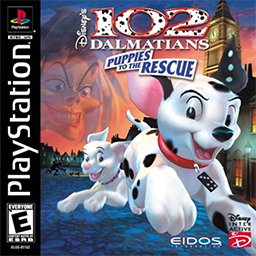
Disney's 102 Dalmatians: Puppies to the Rescue is a 2000 platform game developed by Toys for Bob and published by Eidos Interactive for Microsoft Windows, PlayStation, Dreamcast and Game Boy Color. It is loosely based on the live-action Disney movie 102 Dalmatians.

De Blob is a puzzle-platform game developed by Blue Tongue Entertainment and published by THQ for the Wii. Players explore and liberate an alien city from the evil, monochromatic INKT Corporation that has taken over the city and outlawed all color and fun from daily life. Playing as Blob, players embark on a quest to re-animate the fictional Chroma City and free it from the INKT Corporation by splattering buildings, landmarks, and citizens with color.
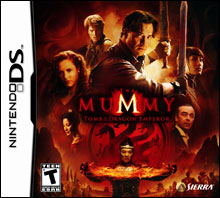
The Mummy: Tomb of the Dragon Emperor is a third-person action adventure video game adaption of film of the same name. The PlayStation 2 and Wii versions of the game were developed by Eurocom, while the Nintendo DS version was developed by Artificial Mind and Movement. The game was published by Sierra Entertainment, a subsidiary of Vivendi Games. It was released worldwide in Q3 2008.
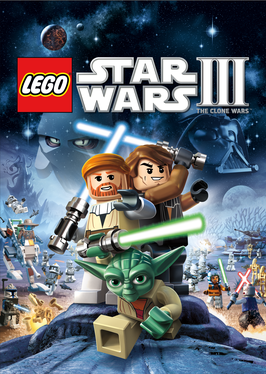
Lego Star Wars III: The Clone Wars is a Lego-themed action-adventure video game developed by Traveller's Tales and published by LucasArts in March 2011 for the PlayStation 3, PlayStation Portable, Xbox 360, Wii, Nintendo DS, Microsoft Windows, and the Nintendo 3DS. It was one of the 3DS's launch titles. The game features missions and characters from the 2008 animated film Star Wars: The Clone Wars and its follow-up television series, as well as fan-favorites from the original Star Wars saga, in both single-player and multiplayer gameplay modes. The Mac OS X version of the game was released by Feral Interactive.

De Blob 2 is a platform puzzle video game and the sequel to the Wii 2008 video game De Blob. As with its predecessor, De Blob 2 was developed for home consoles by Blue Tongue Entertainment and published by THQ, this time in association with the TV network Syfy. Unlike de Blob, however, de Blob 2 was also released for other consoles other than the Wii; the game was released for the PlayStation 3, Xbox 360 and the Nintendo DS, with the latter version having been developed by Halfbrick Studios and taking place between de Blob and de Blob 2.
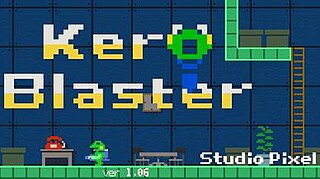
Kero Blaster is a platform video game created by Daisuke "Pixel" Amaya. It was released in 2014 for PC and iOS and is the first major project of Pixel since Cave Story in 2004. The game places a heavy emphasis on shooting and received positive reviews on both platforms. A short, free demo titled Pink Hour was made available a month before the full game's release. A short, free companion game and sequel to Pink Hour titled Pink Heaven was released in November 2015, coinciding with the new Kero Blaster update.
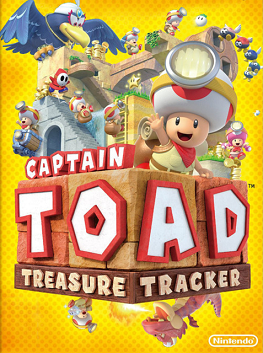
Captain Toad: Treasure Tracker is a 2014 action puzzle video game developed and published by Nintendo for the Wii U. The game was re-released for the Nintendo Switch and Nintendo 3DS in 2018 with additional content. It is a spin-off of the Super Mario series and a part of the larger Mario franchise. The game stars Captain Toad and Toadette as they complete levels, defeat enemies and save each other from the antagonist Wingo. Each level is contained within a miniature diorama-like environment that requires puzzle-solving and platforming challenges to complete. The player also uses the Wii U GamePad to rotate the camera and reveal new information and interact with the environment.

Downwell is a 2015 vertically scrolling shooter video game with roguelike elements. It was developed by Ojiro Fumoto and published by Devolver Digital for iOS and Microsoft Windows in October 2015, for Android in January 2016, and for PlayStation 4 and PlayStation Vita in May 2016. A Nintendo Switch version was released in January 2019. British studio Red Phantom Games developed the Switch and PlayStation ports.
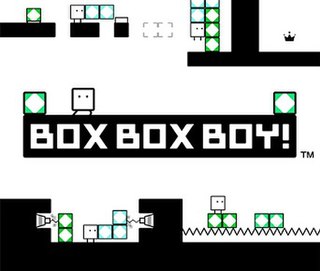
BoxBoxBoy! is a puzzle-platform game developed by HAL Laboratory and published by Nintendo for the Nintendo 3DS handheld game console. The second game in the BoxBoy! series, the game was released in Japan in January 2016, and in other territories in June 2016.

Picross 3D: Round 2 known in Japan as Rittai Picross 2 is a Japanese puzzle video game developed by HAL Laboratory for the Nintendo 3DS. It is the sequel to the 2009 Nintendo DS game, Picross 3D. The game was released in Japan on October 1, 2015, in North America on September 1, 2016, in Europe on December 2, 2016, and in Australia on December 3, 2016. In North America, it was only released as a digital download.

Picross S is a series of nonogram puzzle game developed and published by Jupiter for the Nintendo Switch game console. As with all past entries in the series, the game involves the player completing nonograms in the shortest time possible. Picross S is the successor to Jupiter's Picross e series on Nintendo 3DS.

Hue is a 2016 puzzle-platform game developed by Fiddlesticks and published by Curve Digital. The game was released on August 30, 2016, for Microsoft Windows, PlayStation 4, and Xbox One; on November 29, 2016, for the PlayStation Vita; and on June 6, 2019, for Nintendo Switch. There were further releases for iOS on January 25, 2020 and Android on April 22, 2020.

Human: Fall Flat is a puzzle-platform game developed by No Brakes Games and published by Curve Digital. It was initially released for Microsoft Windows, macOS, and Linux in July 2016, and received ports for PlayStation 4, PlayStation 5, Xbox One, Xbox Series X/S, Nintendo Switch, Google Stadia, and iOS and Android over the next several years.
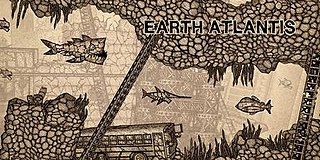
Earth Atlantis is a 2D side-scrolling shooter video game developed and published by Thai indie studio Pixel Perfex Studio for the Microsoft Windows, PlayStation 4, Nintendo Switch, and Xbox One. Earth Atlantis was released on October 5, 2017.
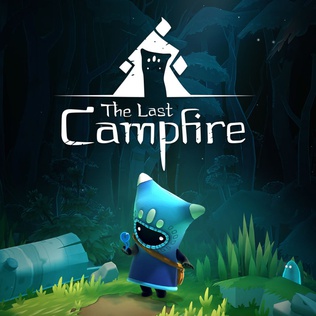
The Last Campfire is a puzzle video game developed and published by Hello Games. It was released for iOS, Windows, PlayStation 4, Nintendo Switch and Xbox One on August 27, 2020.

BoxBoy! is a series of puzzle-platform games developed by HAL Laboratory and published by Nintendo. The series centres around Qbby, a square-shaped character who can produce a string of connected boxes. The boxes are used to overcome obstacles in stages that Qbby must be guided through. The first game, BoxBoy!, released on January 14, 2015, in Japan on the Nintendo 3DS. Its sequel, BoxBoxBoy!, was released for the Nintendo 3DS in 2016, with a third game, Bye-Bye BoxBoy!, in 2017. A physical compilation of the first three games, HakoBoy! Hakozume Box, was released in Japan. A fourth installment, BoxBoy! + BoxGirl!, was released for the Nintendo Switch in April 2019.
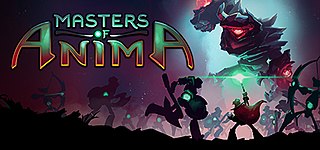
Masters of Anima is a real-time strategy video game developed by French studio Passtech Games.

Sudoku Mania is a 2006 sudoku puzzle game developed by Frontline Studios and published by UFO Interactive Games. Released on June 30, 2006, Sudoku Mania received "generally unfavorable" reviews from critics, having a score of 25 out of 100 on review aggregator Metacritic. Critics criticized the game's controls for being "disappointingly" "simplistic" and "obtuse".
Scribblenauts is a series of action puzzle video games primarily developed by independent studio 5th Cell. The series is owned and published by Warner Bros. Interactive Entertainment. The first game in the series was titled Scribblenauts and was first released on September 15, 2009, in North America, exclusively on the Nintendo DS. Since the release of the first game, five other Scribblenauts games have been released, in addition to two compilations and two comic adaptations.

















